History
History Timeline
From being at one time the largest nation in Europe to being wiped off the map to having a significant impact on the collapse of the Soviet Empire, Lithuania’s thousand-year complicated history of triumphs and defeats exemplify the spirit of the nation and its people.
Sometimes the little details that provide context to larger events are forgotten as time passes, therefore, those significant details are included.
10,000 BCE: Settlers in Northern Europe

As glaciers receded, people began to inhabit the Baltic Sea region. Representatives of the Baltic Magdalenian culture utilized broad flint arrowheads, broad and short scrapers, bone, horn and antler items (hoes, harpoons, ice-picks). 40 campsites are currently known to have existed in Lithuania.
4000 BCE: Evidence of Religious Worship

Evidence of religious worship of the Lord of Nature. Archeological find of a two meter tall wooden idol from Sventoji with the image of the deity with a carved human face attributed to this time period. Also found, three ritual sticks with a carved head of an elkdoe.
3000 BCE: Indo-European Migration into Europe

The Indo-Europeans brought their language and the Corded Ware culture into the region and intermingled with the local tribes. Lithuanian, Latvian and Prussian languages developed in the following centuries. Today’s Lithuanian language retains many Proto-Indo-European features, therefore, making it the oldest living spoken language.
98: Amber Traders

The Roman Senator and historian Tacitus (50-120) wrote of the Aesti people, known as amber traders, who lived along the shores of what is now known as Lithuania, Latvia and Estonia.
2nd Century: The Baltic Tribes

Greek Geographer Ptolomy (100-170) mentions the Galindian and Yotvingian tribes who lived in the region now known as Lithuania.
5th Century: Major Baltic Tribes Emerge

Major Baltic tribes emerge: Curonians, Sellonians, Samogitians (lowlanders), Lithuanians, Aukštaičiai (highlanders) and Semigalians.
7th Century: Lithuanian Langauge Splits From Other Baltic Languages

Proto-Baltic-Slavic languages descended from Proto-Indo-European. Slavic languages split around 1500-1000 BCE and the single branch called Proto-Baltic languages, were comprised of Lithuanian, Latvian and Prussian. Lithuanian split in the 7th century.
7th-10th Centuries: Norsemen Sagas Describe Raids on Baltic Tribes

In the sagas, Vikings mounted raids on the Curonians in 675. The Danes attacked in 853, the Swedes in 854.
1009: First Written Mention of “Litua” (Lithuania)

Written in Annals of Quedlinburg: “[In 1009] St. Bruno, an archbishop and monk, who was called Boniface, was slain by Pagans during the 11th year of this conversion at the Rus and Lithuanian border, and along with 18 of his followers, entered heaven on March 9th.”
11th Century: “Baltic” Region is Named
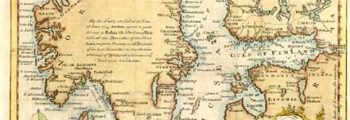
Adam of Bremen (1050-1081), a German chronicler, gave the sea boarding the Nordic countries the name: Baltic. He reported to adopt the local term, balticus from baelt (belt) because the sea stretches across the land to the east in the manner of a belt.
12th Century: The Ruling Baltic Tribes

By the 13th Century, various Baltic tribes ruled the Baltic Sea region: Latgalians, Samogitians, Aukštaičiai, Curonians, Prussians, Skalvians, Yotvingians, Galindians, Semigallians, and Selonians.
Early 13th Century: Lithuania’s First Capital, Voruta

The history of Voruta has been lost to time. Voruta is mentioned in written sources from the time as Lithuania’s possible capital during the reign of King Mindaugas. The location of Voruta is unknown.
1208: First Christian Crusades Against Lithuania

The Teutonic Order and Livonian Order mounted unsuccessful raids against the Grand Duchy of Lithuania for the following 100 years.
1219: The Grand Duchy of Lithuania

The Baltic tribes were forced to unite to battle the mounting attacks from Christian orders. In addition, the feudal system of land ownership was established, therefore, an organized social structure had emerged out of necessity to maintain social order.
September 22, 1236: Battle of Saulė

The Livonian Brothers of the Sword were formed in Riga in 1202 to conquer and covert Baltic pagans to Christianity. The 3,000 Christian crusaders marched into the territory of the Samogitians for battle, but were defeated and decimated by Lithuanian Duke of Samogitia, Vykintas, and his forces of 5,000.
July 6, 1253: Mindaugas is Crowned King of Lithuania

Mindaugas (1203-1263) united the Baltic tribes, establishing the Kingdom of Lithuania. At the time, the total population of the Kingdom was 400,000 people. The size of the territory was 77,000 square miles.
1269-1282: Traidenis

During Grand Duke Traidenis’s (1220-1282) reign, extended Lithuanian territory into Sudovia, Semigalia, and Black Ruthenia. A devout pagan, he defeated many incursions by the Livonian Order.
1295-1316: Vytenis

Grand Duke Vytenis’ (1260-1316) reign was plagued by constant warfare with Crusaders. He secured Lithuania’s standing in the region with alliances with Riga and successful campaigns against the Livonian Order.
1316-1341: Grand Duke Gediminas

Vytenis’ brother, Grand Duke Gediminas (1275-1341) established a dynasty that could be traced to many European dynasties. During his reign, he conquered territory, expanded Lithuania’s territory from the Baltic Sea to the Black Sea.
1321-1323: Trakai, Capital of Lithuania

Trakai was the stronghold of Grand Duke Gediminas’ son, Kęstutis, after Lithuania’s capital was moved to Vilnius.
1323: Gediminas Establishes Vilnius, capital of Lithuania

Gediminas established Vilnius after dreaming of an iron wolf howling atop a hill. Pagan priest interpreted the dream and told Gediminas he must build a city on the hill, the howling of the iron wolf represents the great deeds of Lithuanians that will be known throughout the world and history.
1328: Map of Europe

1385: Union of Krevo (Krewo)

Pagn-born Lithuanian Grand Duke Jogaila (Jagiello) (1352-1434) married Polish Queen Jagwiga. Jogaila converted to Christianity and began to Christianize Lithuania. He served as the Polish King from 1386-1434 and the Grand Duke of Lithuania (1377-1434) and founded the Jagiellonian dynasty which would rule until 1572.
1392-1430: Vytautas the Great

Vytautas (1350-1430) was Gediminas’ grandson. In addition to serving as the Grand Duke of Lithuania, he was Prince of Hrodna (1370-1382), Prince of Lutsk (1387-1389) and King of the Hussites. During his reign he defeated the Teutonic Knights and drove back the Mongols, increasing the size of Lithuanian territory.
July 15, 1410: Battle of Grunwald (Tannenberg/Žalgiris)

The battle was fought during the Polish-Lithuanian-Teutonic War. The Teutonic Knights suffered a major defeat from the united forces of Lithuanian Grand Duke Vytautas and the Polish King Jogaila, shifting the balance of power from Western Europe to Eastern Europe.
1440-1492: Kazimieras Jogailaitis (Casimir IV Jagiellon)
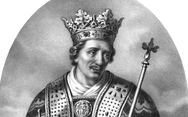
Kazimieras Jogailaitis (Casimir IV Jagiellon) (1427-1492) was Grand Duke of Lithuania and King of Poland.
1458-1484: Šv. Kazimieras (Saint Casimir Jagiellon)

Šv. Kazimieras Jogailaitis (Saint Casimir Jagiellon) was the second oldest son of King Kazimieras (Casimir IV). Known for his piousness and devotion to God. After his death miracles were attributed to him and later in 1602 he was canonized. He’s the patron saint for Lithuania and Poland.
1470: Map of Europe

1492-1506: Aleksandras (Alexander I Jagiellon)

Aleksandras (Alexander I Jagiellon) (1461-1506) became Lithuanian Grand Duke in 1491 and King of Poland in 1501. He was last known ruler of the Gediminds dynasty.
1506-1548: Žygimantas Senasis (Sigismund I the Old)

Žygimantas Senasis (Sigismund I the Old) (1467-1506) was the fifth son of King Kazimieras (Casimir).
1547: First Printed Book in the Lithuanian Language Published

Martynas Mažvydas published The Catechism in Könisburg. 200 copies were printed, and only two are known to have survived. One is displayed at Vilnius University and the other at Nicolaus Copernicus University in Torun Library in Poland.
1547: Barbora Radvilaitė (Radziwiłł)

Considered the most beautiful woman in Europe at the time, Barbora Radvilaitė (1520-1551) secretly married Lithuanian Grand Duke Žygimantas (Sigismund II Augustus), against the wishes of the Polish nobility. Their love story was a scandal for the times and her mother-in-law Bona Sforza was rumored to have poisoned her.
1548-1572: Žygimantas (Sigismund II Augustas)

Žygimantas (Sigismund II Augustas) (1520-1572) was the Kind of Poland and the Grand Duke of Lithuania. He was the last of the Jagiellon dynasty. He brokered the Union of Lublin, creating a free elective monarchy.
1569: Polish-Lithuanian Commonwealth Established

The treaty, masterminded by Žygimantas (Sigusmund II Augustus), established an elective single monarchy with a common Senate and Parliament to represent both Lithuanian and Polish territories.
April 1, 1579: Vilnius University is Established

The university was formed when the Lithuanian nobility asked Jesuits to create an institute of higher learning in 1568. The Vilnius Academy was established. In 1579, Stefan Batory, King of Poland and Grand Duke of Lithuania upgraded the academy creating the “Alma Academia et Universitas Vilnensis Societatis Iesu.”
1655-1661: Polish-Lithuanian Power Diminishes

The Northern Wars, fought between Russia and Sweden over the territory of Livonia (Latvia) and Estonia, forced the Polish-Lithuanian Kingdom to fight both the Swedes and Russians during different stages of the war. Poland-Lithuania would not recover from the war and the economic devastation it caused.
1700-1721: Russia Becomes Dominant Power in Region

The war between Russia and Sweden engulfed the Northern and Eastern European nations. Russia rose in power in the region, seizing Livonia (Latvia) and Estonia from Sweden. The war, plague and famine took 40% of the Polish-Lithuanian population.
September 13, 1732: Secret Treaty of the Three Black Eagles

Austria, Russia and Prussia sign a secret treaty creating an alliance to undermine the strength of the Polish-Lithuanian Kingdom by influencing their elections to elect a King who would not to attempt to enact modern reforms. Their interference created a crisis and led to the War of Succession in Poland.
1741 Map of Europe

September 22, 1772: First Partition of Poland and Lithuania

Austria, Russia and Prussia, seeking to further diminish the power of the Polish-Lithuanian Commonwealth in the region, coordinated an invasion and seized territory. 30% of the Commonwealth’s lands was lost.
May 3, 1791: Poland-Lithuania Adopt the First Democratic Constitution in Europe

The May 3 constitution was Europe‘s 1st and the world‘s 2nd modern codified national constitution, following 1788 ratification of the U.S. Constitution. Introducing political equality between townspeople and nobility, placing peasants under the protection of the government. Only in effect for a year, until the Russian-Polish war of 1792.
January 23, 1793: Second Partition of Poland and Lithuania

Russian Empress Catherine II felt threatened by the Polish-Lithuanian Commonwealth’s democratic constitution in 1791 and attempt at modern reform which could lead to a resurgence in strength by the Commonwealth. Russian forces invaded in 1792. Russia and Prussia divided up the territory, seizing 60% of Polish-Lithuanian lands.
1795 – Lithuania, Prussia, Poland

October 24, 1795: Third Partition of Poland and Lithuania

After a failed Polish rebellion against the Austrian, Russian and Prussian occupiers, they acted to wipe Poland off the map and they dissolved the Commonwealth. The remainder of the Commonwealth was divided up between them. Lithuanian territory fell under Tzarist Russian rule, except for Klaipėda (Memel), going to Prussia.
1830-1831: Uprising Against the Russian Occupation

The uprising against the Tsar began in Warsaw and spread through Lithuania with over 150,000 citizens participating. The larger Russian army succeeded in crushing the rebellion. Over 40,000 rebels were killed/injured.
1832: Russification Enforced
The Tsar implemented further reprisals against Poles and Lithuanians to punish them for the uprising. The Tsar removed the nobility statues of Poles and Lithuanians and confiscated private lands.The Russian language replaced Polish, Russian, Ukrainian and Belorussian in official administrative capacities. Vilnius University was closed.
January 22, 1863-1864: Uprising Against Russian Occupation

The uprising began when young Poles refused conscription into the Tzar’s army and spread to over 200,000 Poles and Lithuanians rising up against the Russian occupation. The Tzar’s forces crushed the rebellion and publicly hung rebels and sent over 80,000 people to Siberian prison camps.
1864: Stricter Russification Implemented

After the failed uprising the Tsar banned the Polish, Lithuanian languages. Catholic schools and monasteries were closed. Lithuanians and Poles were banned from pursuing public service work and professional careers (teachers, lawyers, doctors, etc). More land was confiscated and repopulated by ethnic Russians.
1864-1904: Lithuanian Book Smugglers Resistance Movement

After the 1863 insurrection against the Russian occupation, the Tsar Alexander II banned the Lithuanian language and Lithuanian schools. The Russian language was enforced. About 30,000-40,000 books, published as far away as the United States, were smuggled into Lithuania each year by individuals.
1883: Lithuanians’ “National Awakening”

Tzarist repressions inspired a period of “National Awakening.” Studies of the banned Lithuanian language and culture proliferated in underground movements and outside of Lithuania. Lithuania’s first national and political newspaper, Aušra, published in Prussia due to Tzar’s press ban, but gained popularity and found contributors among the Lithuania intelligentsia.
1898: Vincas Kudirka Pens What Would Become Lithuania’s National Anthem

Vincas Kudirka (1858-1899), a physician and poet, was active in Lithuania’s “national awakening” movement. Kudirka edited the underground newspaper, “Varpas” (The Bell) which promoted Lithuanian consciousness and called for independence. He composed the music and lyrics of a song, which in 1918, would become Lithuania’s national anthem.
December 4-5, 1905: Great Seimas of Vilnius

1905 Russian Revolution forced Tsar Nicholas to make concessions. In Vilnius, a National Assembly formed and adopted a resolution demanding Lithuanian autonomy, equal rights, political and religious freedom, the reinstatement of the Lithuanian language and schools. The Tsar granted some of these demands, but fell short of granting autonomy.
1915: Germany Occupies Lithuania During WWI

The Kaiser’s forces invaded Russia, and what was Lithuania, quickly occupying the Lithuanian territory. Over 50,000 Americans-Lithuanians fought in US forces when the US entered the war.
1915-1918: Lithuanian Activist Conferences for Lithuanian Independence

While Lithuania was occupied by Germany, Lithuanian activists held ten conferences in Switzerland and Sweden during World War I to discuss the political future of Lithuania and to negotiate independence with world leaders after the war.
February 23, 1917: Russian Revolution

While civil society had broken down due to the war and shortages, protests erupted in Petrograd demanding the end of the monarchy. Russian militants took advantage and stormed the monarch’s government. Tsar Nicholas II abdicated. A provisional government was formed.
September 18-22, 1917: Vilnius Conference

While still occupied by Germany, Lithuanians and members of various ethnic communities in Lithuania held a conference and declared that an independent Lithuanian state based on democratic principles must be established. The conference elected the “Council of Lithuania” who moved forward with establishing Lithuanian independence.
October 25, 1917: October Revolution in Russia

Bolshevik militants (the “Reds”) led by Leon Trotsky (and Vladimir Lenin) storm the Winter Palace in Petrograd and remove the provisional government (the Mensheviks – the “Whites), taking power.
Feb. 16, 1918: Lithuania Reestablishes Independence

Lithuania reestablishes independence from Tsarist Russia.
December 8, 1918 – August 1919: Lithuanian-Bolshevik War

The Red Army and Bolshevik forces marched into Lithuania and seized territory. Having only recently become an independent state, Lithuania did not have a standing army and quickly organized volunteer partisans to fight the invasion. Lithuanian forces mounted offenses and defeated the Red Army and Bolsheviks.
April 1919 – November 29, 1920: Polish-Lithuanian War – Poland Seizes Vilnius Region

In April 1919, Polish forces invaded and captured Vilnius and the region. Defeated, Lithuania was forced to move its capital to Kaunas. Poland occupied the Vilnius region until September 1939 when the Soviet Red Army invaded Poland in conjunction with the Nazi army.
April 4, 1919: Antanas Smetona, First Lithuanian President

On 4 April 1919, the State Council of Lithuania elected Smetona the first President of the Republic of Lithuania. He served until April 19, 1920.
May 15, 1920: First Constituent Assembly meets in Kaunas, Lithuania’s new capital
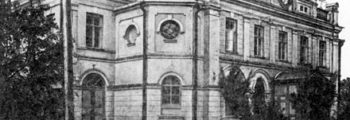
After Poland seized the Vilnius region, Kaunas became the new temporary Lithuanian capital (until October 28, 1939). The Constituent Assembly met after the first democratic election and elected Aleksandras Stulginskas as Chairman. A woman, Gabriele Petkevičiatė-Bitė, chaired the first session.
June 19, 1920: Aleksandras Stulginskas, Second Lithuanian President

On 19 April 1920, the Lithuanian Constituent Assemble elected Aleksandras Stulginskis President. He served until June 27, 1926.
July 12, 1920: Soviet-Lithuanian Peace Treaty

Soviet Russia recognizes Lithuania’s independence under Treaty of Moscow.
September 23, 1921: Lithuania becomes Member of the League of Nations

April 3, 1922: General Secretary Joseph Stalin

Vladimir Lenin appointed Joseph Stalin as the General Secretary of the Communist Party. When the USSR was formed, he ruled as its leader until his death in 1952.
August 1, 1922: Lithuania Adopts New Constitution
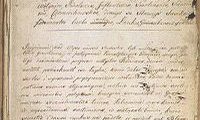
Lithuania was declared a democratic republic, modeled after France. Power was granted to a parliament (Seimas) which elected a Cabinet of Ministers and a President serving three years.
September 25, 1922: National Currency Established

Lithuania establishes its own national currency: the Litas.
October 6, 1922: Constituent Assembly resigns transferring power to the New Seimas
Since the new constitution was adopted, the Constituent Assembly resigned. The new Seimas met on November 13.
October 10, 1922: First Lithuanian Parliament Elected
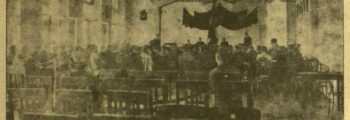
December 30, 1922: USSR is Established

With the “Treat on the Creation of the USSR” between the Russian, Ukrainian, Byelorussian, Transcaucassian (RFSRs), the USSR was formed. Stalin remained leader.
January 10-15, 1923: Klaipėda Revolt

During WWI, the Klaipėda region was occupied by Germany but after their surrender, it was placed under French administration because of ongoing disputes with Poland and their claims to territory. When diplomacy failed, Lithuanians mounted a revolt and seized the territory.
May 1923: Second Seimas Elected
The First Seimas (parliament) was dissolved due a virtual deadlock as no party or coalition could gain a majority. The Second Seimas was democratically elected and deputies served a full term. Stulginskas was re-elected as President of Lithuania.
January 21, 1924: Vladimir Lenin Dies

The founder of the Bolshevik movement and the USSR, Vladimir Lenin dies. Lenin did not want Stalin to continue to rule the USSR and believed he should be removed from power. After his death a power struggle ensued but Stalin prevailed.
May 8, 1926: Third Seimas Elected
The Third Seimas was elected but would be dissolved March 12, 1927 after the military coup led Smetona. Elections to a new Seimas would not occur again until 1936.
June 7, 1926: Kazys Grinius, Third Lithuanian President

Kazys Grinus was elected by the Third Seimas (Parliament) but only served until December 1926 when he was deposed in a coup’d’etat.
December 17, 1926: Coup d’état

Lithuania’s first president, Anatanas Smetona staged a coup d’état and took power. He became the authoritarian head of state and ruled until WWII. When the USSR invaded he escaped to the United States where he died in 1944.
1934: German-Lithuanian Relations Worsen
When the Nazi’s came into power in Germany, German–Lithuanian relations worsened as the Nazis did not want to accept the loss of the Klaipeda Region. The Nazis sponsored anti-Lithuanian organizations in the region. In 1934, Lithuania put the activists on trial and sentenced about 100 people.
September 1936: The Fourth Seimas is Elected
In 1935–1936, Smetona’s prestige declined as a trial against 122 Nazi activists in the Klaipeda region caused Germany to declare a boycott of Lithuanian imports of agricultural products, causing an economic crisis in Southern Lithuania, where farmers engaged in violent protests, forcing Smetona to call for elections to the Seimas.
March 17, 1938: Polish Ultimatum to Lithuania
Poland demanded the re-establishment of the normal diplomatic relations that were broken after the 1920 war and threatened military actions in case of refusal. Lithuania, having a weaker military and unable to enlist international support for its cause, accepted the ultimatum.
March 20, 1939: German Ultimatum to Lithuania to Hand Over Klaipėda

Germany demanded Lithuania turn over control of the Klaipėda region or else face war. The Western powers were following a policy of appeasement to Hitler, and could not assist with diplomacy. Therefore, to avoid war, Lithuania didn’t have a choice handed control of the Klaipėda region to Nazi Germany.
Aug 23, 1939: Molotov-Ribbentrop Pact

Signing of Molotov-Ribbentrop Pact which spelled out the terms where Stalin and Hitler agreed not to attack each other while they divided up the spoils of their respective invasions. Pact included secret protocols placing Finland, Estonia, Latvia in the USSR’s sphere of influence while Poland, Lithuania in Germany’s.
September 1, 1939: HItler Invades Poland

World War II begins with the Nazi invasion of Poland.
September 17, 1939: Soviet Army Invades Poland/Vilnius

The Soviet Army with a force of 800,000 soldiers, invaded Poland as detailed in the Molotov-Ribbentrop Pact. This included the Vilnius region which was held by Poland since 1920.
September 22, 1939: Nazi-Soviet Victory Parade in Poland

Nazi-Soviet military parade in Brest-Litovsk celebrating the victory of the invasion of Poland. It marked the withdrawal of German troops to the previously agreed demarcation line in the secret protocols of the Molotov-Ribbentrop Pact and the handover of the city and its fortress to the Soviet military.
October 10, 1939: Soviet-Lithuanian Mutual Assistance Treaty

The USSR demanded Lithuania allow Soviet bases on the territory with 20,000 Red Army soldiers. In return, Moscow would return Vilnius and a portion of the region that Poland seized in 1920. With threats of a German and a USSR invasion, Lithuanians accepted Moscow’s terms.
May 25, 1940: Soviet False Flag to Justify Retaliation

Moscow falsely accuses Lithuania of violating the Mutual Assistance Treaty by claiming 3 Red Army soldiers stationed in Lithuania were abducted by Lithuanians and tortured and one killed. Lithuanian investigators found that earlier in the month, a Red Army soldier had deserted and when he was found, he committed suicide.
May 30, 1940: Moscow Escalates Accusations, Lithuania Creates Government in Exile

Moscow escalated their accusations and charged Lithuania with other violations, such as provoking Russian soldiers. Out of fear of a Soviet occupation, the Lithuanian envoy to Rome, Stasys Lozoraitis, was empowered to establish a government in exile. Lithuanian leaders traveled to Moscow to negotiate with Moscow to defuse the situation.
June 5, 1940: Soviet Troops Mobilize on Lithuania’s Borders and Prepare for Invasion
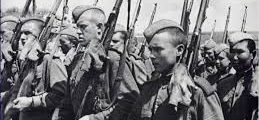
Although negotiations continued in Moscow to diffuse the situation, Lithuanians didn’t understand the plan for invasion was already underway. 225,000 Soviet soldiers had gathered on the border with orders to provoke Lithuanians in order to justify an all-out attack.
June 14, 1940: Soviet Ultimatum and Lithuanian Capitulation
Moscow delivered final ultimatum to Lithuania, demanding allowing more Soviet troops into the country and forming a new government more friendly toward Moscow, or else USSR would invade. An answer was expected within 12 hours. Red Army had already begun crossing the border. Lithuanians capitulated to avoid bloodshed.
June 16, 1940: Sovietization Begins
Moscow nationalized all businesses, industries and factories, natural resources, and personal property. Foreign embassies were closed. NKVD secret police established themselves in the Ministry of the Interior to grow their spy network and hunt down ‘enemies of the people.’
July 1, 1940: Lithuanian Government Dissolved

Lithuanian Seimas (Parliament) dissolved per Moscow’s ultimatum. Over 2,000 Lithuanian political activists arrested. On July 14, a new election was held – only Communist Party members could run for a seat. July 21, the newly elected government established the Lithuanian Soviet Socialist Republic and petitioned Moscow to join the USSR.
July-November 1940: Mass Arrests
NDVD arrested and tortured over 15,000 ‘enemies of the state’ in Lithuania. These were individuals who could possibly mount dissent: intellectuals, teachers, policemen and soldiers, politicians, artists, writers, journalists, priests and nuns, judges, lawyers.
July 23, 1940: Welles Declaration
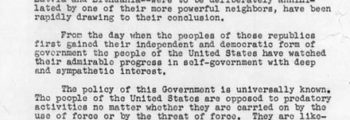
The United States condemns the USSR occupation of Lithuania, Latvia and Estonia and refuses to recognize the illegal annexation.
August 3, 1940: Lithuania Illegally Annexed by USSR

Moscow’s puppet government in Lithuania petitions Moscow to accept Lithuania as a Soviet Republic. Moscow accepts the petition and Lithuania becomes the 14th Soviet Republic. Latvia and Estonia suffer the same fate. “Sovietization” begins: cultural and religious organizations were banned.
August 3, 1940 – June 13, 1941: Continued Arrests and Sovietization
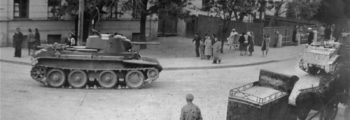
Arrests of ‘enemies of the state continued. Conscription into the Red Army was enforced. Taxes were increased. Food and economic shortages were widespread.
June 14-18, 1941: Soviet deportations of Lithuanians

1940 Jun 14-18 – The USSR began massive deportations of Lithuanians, Latvians and Estonians (approx. 90,000 people) to Siberian prison camps.
June 22, 1941: Nazi Army occupies Lithuania

The Nazi Army occupied Lithuania within a week. Germany entertained the provisional government established by the Lithuanian Activist Front who assumed Germany would support a free Lithuania, but German arrested its leaders and in July established the Reichskommissariat Ostland. The Holocaust in Lithuania would take the lives of 250,000 Jews.
June 22, 1941: June Uprising

While Nazi army invaded Lithuania, Soviet resistance group, Lithuanian Activist Front (LAF), greeted the Germans as liberators, declared Lithuanian independence, assumed leadership and collaborated with Nazis in atrocities against Jews and Poles. Germans weren’t interested in granting Lithuania independence. September 26, Germany banned LAF and arrested their leaders.
July 5, 1944: Soviet Red Army returns to Lithuania

The Soviet Red Army returned with 1.5 million soldiers to re-occupy the Baltic states. By January 1945, the Nazi army had retreated. Moscow begins arrests and sends citizens to Siberian gulag prison camps. Sovietization continues where it left off in 1941.
1944-1953 : Lithuanian partisan war
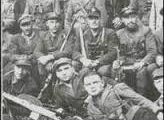
Over 100,000 Lithuanians fight a partisan war against the Soviet military. It was the biggest and longest war in Europe after WWII that no one heard of. Over, 30,000 are killed. Over 130,000 (partisans and those who helped them) sent to Siberian prison camps (and approx, 30,000 die there).
1945: Allies allow Stalin to retain the Baltic states

At the conclusion of WWII, at the Potsdam Conference, the Allies allowed Stalin to retain and occupy the Baltic states. The West had sacrificed the Baltic nations for Stalin’s cooperation to defeat Hitler and Japan.
1945 – 1952: Mass Arrests and Deportations to Siberian Gulag Prison Camps

Over 170,000 Lithuanians arrested, sent to Siberian gulag prison camps to perform hard labor. 70% were women and children. Over 3o,000 died due to the harsh conditions. After Stalin died in 1953, about 60,000 were allowed to return to Lithuania through to 1963, while 30,000 were forced to stay behind.
March 5, 1953: Joseph Stalin Dies

Joseph Stalin Dies.
September 14, 1953: USSR General Secretary Nikita Krushchev

Nikita Khrushchev becomes the General Secretary of the Central Committee of the Communist Party of the Soviet Union. He began a program of de-Stalinisation and allowed prisoners in the gulag to begin to return home, however, he was removed from power in 1964 by Pro-Stalinists.
November 2, 1955: Repressions and Arrests on All Soul’s Day
During All Soul’s Day (Velines) people were at the military cemetery in Kaunas singing patriotic folk songs. KGB militia intervened and arrested a young woman. About 100 people tried to help liberate her, creating a small riot. Velines was again observed by people in 1956 in Kaunas and Vilnius without incident.
November 1956: Anti-Soviet Demonstration in Vilnius
Anti-Soviet demonstration erupts in Vilnius on the occasion of the Hungarian Revolution.
November 1, 1957: All Soul’s Day Arrests
In Kaunas over a thousand people observed All Soul’s Day, sang patriotic songs. KGB miltia tried to stop them, violence broke out, three militia men were injured. Then 2 thousand demonstrators walked towards the Kaunas KGB building where 105 protestors (59 people, 11 students, 13 teenagers) were arrested and detained.
July 21, 1961: Anti-Soviet Riot in Kaunas
At the Kaunas Zalgiro sports stadium, a crowd of 10,000 began to shout anti-russian slogans, started to throw rocks at a miltia car, flipped it over and set it on fire. During the violence, three militia men were injured, a civilian was shot dead, and four others injured.
October 14, 1964: USSR General Secretary Leonid Brezhnev

Leonid Brezhnev is elected by the Politburo as the General Secretary of the Central Committee of the Communist Party of the Soviet Union. During his leadership, economic decline and social deterioration increases. His tenure is known as the “years of stagnation.”
November 1970: Simas Kudirka Defects

Lithuanian Soviet Navy seaman defects by jumping from his Soviet ship to a U.S. Coast Guard ship and creates an international incident. US authorities return him to Moscow where he was imprisoned for treason. After US pressure, he was released in 1974 and allowed to emigrate to the United States.
1971-1977: Anti-Soviet Petitions Demanding Religious Freedom
Lithuanians petition the leaders in Moscow demanding freedom of religion. In 1971, the petition was signed by 17,054 people. In subsequent years, more petitions were organized. In 1973, three more petitions – signed by 14,840 and 16,498 and 30,782. In 1974 four more petitions. In 1975 seven petitions. In 1976, nine petitions. In 1977, three
1972: Lithuanian Catholic Underground

By 1972, the Catholic underground began publishing periodicals about human rights abuses in Lithuania. These periodicals were smuggled and distributed by the Catholic Church to the West, and used by émigré community activists in international political forums.
May 14, 1972: Romas Kalanta’s Self-Immoluation to Protest Soviet Rule

19 year old Romas Kalanta self-immolated himself in a public park in Kaunas. He left behind a note: “blame only the regime for my death.” Soviet authorities tried to cover up what happened and tried to prevent people from attending his burial. But thousands of people gathered in the streets
November 27, 1976: Lithuanian Helsinki Group is Established
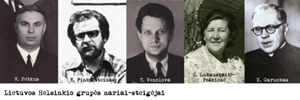
The Lithuanian Helsinki Group was a human rights organization who exposed violations by the Soviet Union. Many of its founding members were arrested and sent to gulag prison camps in order to suppress the group.
1978: Lithuanian Freedom League

The Lithuanian Freedom League (LFL): underground anti-Soviet dissident group who published anti-Soviet newsletters. Leader Antanas Terleckis was a survivor of the Siberian gulag prison system in the 1950s. He was arrested in 1979 by Soviet authorities for his LFL activities.
August 23, 1979: Anti-Molotov-Ribbentrop Appeal
Forty-five Balts (36 Lithuanians) signed an appeal denouncing the Molotov Ribbentrop Pact of 1939 and its consequences, and appealed to the United Nations to denounce the illegal Soviet occupation of the Baltic States.
November 12, 1982: USSR General Secretary Yuri Andropov

Yuri Andropov is elected by the Politburo as the General Secretary of the Central Committee of the Communist Party of the Soviet Union. He was involved in the suppression of the 1956 Hungarian Uprising, served as the KGB Chief from 1967-1982 and was Mikhail Gorbachev’s mentor.
February 13, 1984: USSR General Secretary Konstantin Chernenko
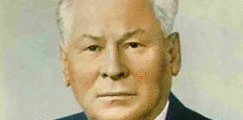
Konstantin Chernenko is elected by the Politburo as the General Secretary of the Central Committee of the Communist Party of the Soviet Union. But from the beginning of his appointment he was ill, ad therefore was absent from the political stage.
March 15, 1985: USSR General Secretary Mikhail Gorbachev

Mikhail Sergeyevich Gorbachev was elected by the Politburo as the General Secretary of the Communist Party of the Soviet Union. He introduces new reforms, glasnost (openness) and perestroika (restructuring) but continued economic decline and political instability forced him to resign December 1991.
Aug 23, 1987: First Open anti-Soviet Protest

Lithuania, Latvia and Estonia test the limits of Glasnot with the first public demonstrations to protest the Molotov-Ribbentrop Pact and Soviet rule. (In Lithuania, organized by the Lithuanian Freedom League.) 800 people participated and KGB forces harrassed the groups, but there were no arrests.
February 16, 1988: Peaceful Protests Met With Arrests
On Lithuania’s anniversary of their 1918 declaration of independence, citizens organized peaceful marches in Vilnius. The Soviet militia attempted to thwart the demonstration and arrested thirty-two people. Likewise, on February 25, 1988, four thousand people demonstrated in Tallinn, Estonia to note the 1918 anniversary date of its independence.
June 3, 1988: Lithuanian Reform Movement Sajūdis is formed

The Lithuanian Reform Movement Sajūdis is formed by a group of 36 intellectuals seeking social, economic and political reforms. Originally it was tolerated by Moscow in the spirit of glasnost and pereistroika, until Sajūdis began to drive towards Lithuanian independence.
June 14, 1988: Lithuanian Freedom League Rally Publicly Displays Lithuanian Pre-WWII Flag for First Time

6,000 people attend rally organized by the Lithuanian Freedom League and flew the Lithuanian pre-WWII for the first time since WWII.
June 21, 1988: Sajūdis Demonstrations

On June 21 and 24th, 20,000 people attended Sajūdis organized demonstrations review the platform and goals of the Lithuanian delegates preparing to attend the Nineteenth Party Congress of the Communist Party of the Soviet Union in Moscow.
July 3, 1988: First Joint Baltic Nation Protest
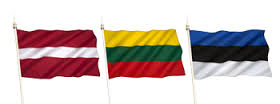
The first mass cooperation between the Baltic states occurred on July 3, 1988 with a Baltic song festival that took place in Vilnius and attracted 50,000 participants. Individuals displayed the banned national flags of Lithuania, Latvia, and Estonia and openly sang patriotic songs. They marched through the streets chanting “freedom”
July 9, 1988: 100,000 people attend demonstration

100,000 people attend a Sajūdis organized demonstration to greet the Lithuanian delegates returning from the Nineteenth Party Congress in Moscow. The crowd sings the pre-WWII national anthem for the first time since WWII.
July 1988: Lithuanian Demonstrations Grow

100 cyclists participate in a pro-ecologigy ride and attend 24 rallies across Lithuania to support Sajūdis. A “Rock March” was organized to introduce the youth to Sajūdis and its ideals.
August 21, 1988: Sajūdis Publishes Secret Protocols of Molotov-Ribbentrop Pact

Sajūdis Publishes Secret Protocols of Molotov-Ribbentrop Pact in its newsletter. Gorbachev continues to deny they exist.
August 23, 1988: 250,000 Lithuanians Protest Soviet Rule

Sajūdis organized a demonstration to protest the secret protocols of the Molotov-Ribbentrop Pact. Sajūdis rallies continued to grow in size exponentially with the fear of arrest.
September 3, 1988: Ecological Protests

Tens of thousands form a human chain on the shores of the Baltic Sea to protest its pollution. On Sept. 16-17, 10,000 Lithuanian form a ring around the Ignalina Nuclear Power plant demanding safety inspections by international experts.
Oct 1988: Lithuanian Communist Chief forced to resign

Lithuanian Communist Party First Secretary Ringaudas Songaila was forced to resign after he targeted groups protesting the Soviet occupation and replaced with Algirdas Brazauskas. The 3, long-serving Baltic Communist Party chiefs were replaced by more moderate individuals to appease reformers in Moscow who were gaining more power under Gorbachev.
October 7, 1988: Lithuanian Flag Flies Over Vilnius First Time Since WWII

After the Lithuanian Parliament officially re-instated the pre-WWII flag, national anthem and national symbols of independent Lithuania, 100,000 people gathered in cathedral square to witness the flag hoisted atop the tower of Gediminas.
October, 22-23, 1988: Sajūdis First National Congress

Sajūdis First National Congress occurs, reform leaders publicly declared for the first time that its goal is to break away from the Soviet Union and form a free and independent Lithuania. Vytautas Landsbergis is elected Chairman. Lithuanian Communist Party Chief Brazauskas returned the main Cathedral to the Catholic Church.
October 24, 1988: Cathedral Returned to Catholic Church

Without consulting Gorbachev, Lithuanian Communist Chief Brazauskas returned the main Cathedral in Vilnius to the Catholic Church. Moscow shut its doors after WWII. At dawn, tens of thousands of Lithuanians attend the first Mass service there since WWII.
November 1, 1988: Moscow Recognizes Religious Holiday for First Time

For the first time, Moscow recognizes a religious holiday, the Catholic feast day of All Soul’s Day, and allows citizens to acknowledge the holiday publicly.
November 24, 1988: Sajūdis Delivers Petition with 1.8 million Signatures
Sqjūdis presents to the Supreme Soviet in Moscow petitions signed by 1,8 million residents of Lithuania (one-half of the entire population) to protest changes in the Soviet Constitution which would further centralize power in Moscow.
December 29, 1988: Bishop Allowed to Return from 48-year exile

Bishop Julijonas Steponavičius, exiled from his Vilnius diocese in 1961 for refusing to condone government interference in church matters, is notified that his 48-year banishment is over, and that he can resume his pastoral duties in Vilnius. Moscow begins to permit religious freedom.
January 15, 1989: Sajūdis-Backed Candidates Win Seats
Four Sąjūdis-backed Communist Party candidates win seats in the Lithuanian Supreme Soviet election, exemplifying the popularity of reform.
January 25, 1989: Lithuanian Language is Officially Restored
The Presidium of the Lithuanian Supreme decrees the implementation of Lithuanian as the official language in administration, public services, and in all laws and legislative acts. Senior government officials and managers are given two years to learn the language.
February 14, 1989: Pro-Russian Anti-Independence Rally
The Russian “Jedinstvo” organizes (working with the CPSU) a rally of 50,000 non-Lithuanians to protest the law implementing Lithuanian as the official language and demanded to replace the Lithuanian Communist Party leadership and urged a work stoppage to protest the decision to re-establish Lithuanian Independence Day as a republic holiday.
February 15-16, 1989: Sajūdis Calls for Re-establishing independence

200,000 participate in Sąjūdis sponsored commemoration of Lithuania’s independence in Kaunas and Vilnius, which includes re-dedication of the Lithuanian Freedom Monument removed by the Soviet occupiers after WWII. The national assembly of Sąjūdis in Kaunas—in its most radical statement to date—calls for re-establishment of an independent, democratic Lithuanian state.
February 24, 1989: Anti-Red Army Forced Conscription Protest
8,000 participate in a pacifist demonstration in Kaunas and call for a stop to the forced induction of Lithuanians into the Red Army.
March 29, 1989: Sajūdis Wins Seats in USSR Congress
31 Sajūdis-backed candidates are elected to the USSR Congress of People’s Deputies. The victory exemplifies Lithuanian citizens’ rejection of Soviet ideology.
May 13-14, 1989: First Joint Baltic Assembly

First joint assembly of representatives from independence movements in the three Baltic republics is held in Tallinn, Estonia. Approximately 500 leaders participate from Lithuanian Sąjūdis, and the Popular Fronts of Latvia and Estonia respectively, calling for independence in a neutral and demilitarized zone comprised of the three republics.
May 18, 1989: Declaration of Lithuanian Sovereignty

Lithuanian Supreme Soviet (by a vote of 291 to 8 and 3 abstaining) approves declaration of Lithuanian sovereignty, stating that Lithuanian laws take precedence over Soviet ones.
May 31, 1989: Demand for Truth

At the USSR Congress of People’s Deputies session in Moscow, the Lithuanian Communist Party head demands that the Kremlin reveal “the historic truth” about the Molotov-Ribbentrop Pact. A commission to investigate it is set up.
July 1, 1989: Gorbachev States Independence for Balts Impossible
Soviet President, Mikhail Gorbachev, tells viewers of Moscow TV that the Baltic national drive for independence would not be tolerated.
July 27, 1989: Economic Independence Granted
The Supreme Soviet endorses a plan to give the Baltic republics an unprecedented degree of economic independence beginning 1990. The three republics would control their own trade, industry and resources, and a right to conduct their economies on a free-market basis.
August 22, 1989: Lithuanian Parliament States Soviet Occupation Illegal

A Lithuanian Supreme Soviet (Parliament) commission officially determines the 1940 occupation and incorporation of Lithuania into the USSR was a direct result of 1939 Molotov-Ribbentrop Pact and therefore illegal. This was the first time an official Soviet state body challenged the legitimacy of Soviet rule.
August 23, 1989: Baltic Way Demonstration

2 million Lithuanian, Latvian, Estonians joined hands, forming 450 mile human chain across three countries protesting the secret protocols of 1939 Molotov-Ribbentrop Pact which paved the way for the illegal annexation of the three nations. Moscow condemned the protest and claimed it was organized by “extremists” discriminating against other nationalities.
December 7, 1989: Lithuania Legalizes Multi-Party System
The Lithuanian Supreme Soviet repeals Article 6 of the constitution (which gave the Communist Party dominance) and legalizes a multi-party system. Although Sajūdis never formalizes itself as a political party, it begins to back candidates in political parties which begin to form.
Dec 19, 1989: Lithuanian Communist Party breaks away from Communist Party of Moscow

Lithuanian Communist Party (LCP), led by Algirdas Brazauskas, breaks away from Soviet Communist Party CPSU (vote of 855 to 150) and declares support for Lithuanian independence. This creates a new schism, leaving a Communist Party (LCPSU) still loyal to Moscow who’ll attempt to subvert and overthrow Lithuanian independence.
December 24, 1989: USSR Congress Admits Molotov-Ribbentrop Pact Illegal
USSR Congress of People’s Deputies adopts a tepid resolution admitting that the Soviet-German Pacts of 1939 violated “the sovereignty and independence of other nations and were legally untenable and invalid from the moment they were signed.”
December 25, 1989: Gorbachev Denounces Lithuanian Communist Party
Speaking to the Central Committee of the Soviet Union’s Communist Party, Gorbachev denounces as “illegitimate” the Lithuanian Communist Party’s decision to become autonomous, and warns that the Soviet Union would not permit “the breakup of the federal state.”
January 11-13, 1990: Gorbachev Visits Lithuania

Gorbachev visits Vilnius. 250,000 Lithuanians gather for peaceful pro-independence rally. He attempts to talk the Lithuanian Communist Party to return to the fold, but Brazauskas states that’s not possible. Gorbachev announces Kremlin has begun work on procedures for 15 republics to secede but Lithuanians view it as a propagandist trap.
January 15, 1990: LCP Head Brazauskas Elected Chairman

In a vote of 228 to 4 (19 abstaining) Lithuanian Communist Party head, Algirdas Brazauskas, is elected by the Lithuanian Supreme Soviet as Chairman, in seeming endorsement of his defiance of Moscow and Gorbachev.
February 24, 1990: Sajūdis gains majority in Lithuanian Parliament

In the first multi-party election since 1940, Lithuanian Reform Movement Sajūdis endorsed candidates won a majority (91 of 141) in elections to the Lithuanian Supreme Soviet (Parliament). Sajūdis itself was not a political party, but its members ran under various parties.
March 11, 1990: Lithuania Re-establishes Independence

Lithuanian Parliament reestablished independence with a vote of 124 for, 6 abstentions and 0 nays. Gorbachev responded by calling the act illegal. Vytautas Landsbergis, the head of Sąjūdis is elected Chairman of Parliament by a vote of 91 over Brazauskas’ 38 votes.
March 1990: Gorbachev Discusses Option to Mount a Coup Against Lithuania

Soviet Military General Varennikov proposes a plan at the Politburo meeting to squash Lithuania’s independence: claim a state of emergency, implement direct presidential rule, bring in three regiments, “isolating” the Vilnius leadership, and have a puppet group of Lithuanians “inviting” in the Soviet Army according to the Prague scenario.
March 22, 1990: Gorbachev Threatens Lithuanians

Gorbachev states: “Information received from the Lithuanian SSR shows volunteers are being registered in territory of the Republic for so-called national defense organizations, with the purpose of to replace the activities of the border army and in part, Internal Affairs affiliates.” He demands they stop and turn over any weapons.
March 24, 1990: Soviet Military Threats

In a show of force, a column of about 100 Soviet tanks, 1500 soldiers pass by Lithuanian Parliament building. Parliament passes an emergency resolution declaring it would transfer all authority to its representatives in Washington D.C. in the event that legislators were arrested or martial law was imposed.
March 25, 1990: Soviet Soldiers Seize LCP Buildings

Armed Soviet military soldiers, accompanied by pro-Moscow communists, seize Lithuanian Communist (LCP) buildings in Vilnius: The Political Education Institute (Marxism-Leninism University) and Institute for Higher Party Education. Moscow prepares strongholds for their division of the Party to work against Lithuanian independence.
March 27, 1990: Red Army Deserters Detained

Since Lithuania re-established independence, young Lithuanians refused to serve in the Red Army where they suffered human rights abuses. Over 850 Lithuanians left the Red Army and went into hiding. Soviet forces brutally seized Red Army deserters seeking refuge at a Red Cross hospital.
March 30, 1990: Soviet Soldiers Seize More Buildings in Vilnius
Soviet soldiers seize Vilnius Communist Party historical archive, General Prosecutor’s Office and printing plant where Lithuanian independence newspapers are printed. Moscow intended installing their own Prosecutor General for the “Lithuanian Socialist Republic” to create confusion and subvert Lithuania’s independence and their intentions to appoint their own independent Prosecutor General.
April 18, 1990: Gorbachev Imposes an Economic Blockade
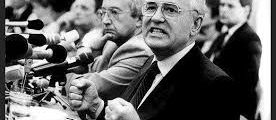
Gorbachev sent the Lithuanian Supreme Council an ultimatum demanding the repeal the Act of the Reestablishment of the Republic of Lithuania, or face an economic blockade. Lithuanians did not back down and Gorbachev imposed a drastic economic blockade where oil supplies were cut by 80% and other goods halted.
June 12, 1990: Russian Parliament Declares Sovereignty
The parliament of the Russian Federation, led by Boris Yeltsin, formally declares its sovereignty. Yeltsin quickly becomes an ally of the three Baltic nations, further angering Gorbachev.
July 27, 1990: Baltic Council Joint Statement with RSFSR President Yeltsin

Baltic Council signs joint statement with RSFSR Supreme Soviet President Boris Yeltsin, which declared preparations to begin bilateral state treaties. If Russian state was to sign treaties with Baltic states, then it validated not only the Baltic states’ independence, but also the Russian state’s independence from the Soviet “center.”
July 29, 1990: Moratorium on Independence
Lithuanian Supreme Council adopts (69 yea, 35 nay, 2 abstentions) a Moratorium to suspend the Act of Independence only when negotiations for independence with Moscow begins. Moscow stalled talks and eventually withdrew all-together, therefore the Moratorium never went into effect.
November 16, 1990: Soviet Military Assault Protestors
200 Lithuanians protest the Red Army in Lithuania at the “Northtown” barracks in Vilnius. Soviet forces turn a firehose on the protestors. Soviet APCs chase retreating protestors, soldiers shoot their weapons in the air. 200 soldiers run into the street and beat protestors with sticks.
November 17, 1990: Creation of “National Salvation Committee” to Restore Soviet Rule
Announcement in the three Baltic republics of the formation of the ‘National Salvation Committee’ to restore Soviet rule. Their membership is kept secret but they include the local hard-line Communist Party and military leadership.
November 17, 1990: Gorbachev Granted New “Emergency Powers”

Gorbachev granted new emergency powers to declare state of emergency and implement direct presidential rule. He disbanded the presidential council (removing reformers), formed new security council composed of KGB, Ministries of Interior and Defense. This prepares for first step of General Varennikov’s proposed plan to act against Lithuania.
November 24, 1990: “New Union Treaty”
Gorbachev unveils “New Union Treaty,” proposing some level of sovereignty for republics, but, stipulation republics would control their own lands and resources “except those parts required to implement the union’s authority” secured Moscow’s central authoritarian hold. Balts viewed treaty as a ploy for Moscow to assert more power over them.
December 20, 1990: USSR Defense Chief Decree Threatening Arrests

USSR Defense Minister Dimitry Yazov issues a decree stating Soviet military patrols and checkpoints will be active in the Baltic republics to arrest and detain Red Army draft dodgers and those who act aggressively toward Soviet forces and any other suspicious individuals.
January 2, 1991: Crackdown begins
Soviet OMON (Interior Ministry special police) forces forcibly seize the Press House (printing facility) in Riga, Latvia and the headquarters of the Communist Party central committee in Vilnius, Lithuania. Gorbachev and USSR Defense Minister Yazov deny any knowledge of this Soviet military action but they do nothing about it.
January 5, 1991: USSR Defense Chief Sends Paratroopers into Baltics
USSR Defense Minister Yazov signs orders to move Soviet paratroopers into the Baltic republics. Baltic regional Commander Lieutenant-General Kuzmin informs Landsbergis by telephone (on Jan. 7) a special paratroop division will be sent in for the forced conscription of young men to the Soviet Army, by order of USSR Defense Minister.
January 6, 1991: Lithuanian Prime Minister Announces Price Hikes

Lithuanian Prime Minister Prunskiene announces steep price increases to address runaway inflation and deteriorating economy across the USSR, despite calls from Lithuanian Parliament not to do so. This is seen as a pretext to create social chaos so Moscow could usher in troops to “restore order.”
January 8, 1991: Pro-Moscow Protest Attempts to Break Into Parliament

Pro-Moscow “Yedinstvo” organization and LCPSU organize protest of 5000 people at Supreme Council. Protestors violently break down the Parliament door more than 30 people make their way in. The rest of the crowd was held back with a firehose. Landsbergis asks citizens to gather and protect the building.
January 9, 1991: Another Attempt to Storm the Parliament Building.
8,000 pro-Moscow demonstrators demanding Gorbachev remove Lithuania’s nationalist government and rule the republic himself, had planned another march on the Parliament building. But they were blocked by 20,000 peaceful Lithuanian nationalists who’d responded to a call by Landsbergis to protect Parliament. Soviet military are active patrolling in the streets.
January 10, 1991: Gorbachev Issues Ultimatum to Lithuania

Gorbachev issues ultimatum threatening Lithuania to repeal independence and restore Soviet laws or else he’ll impose direct presidential rule and remove the Lithuanian government. Vilnius airport and railway closed due to a strike by Russian workers. Throughout evening 30 Soviet tanks and 1,000 paratroopers roamed throught the streets of Vilnius.
January 11, 1991, 11:30am: Soviet Military Seizes Building
The Lithuanian National Defense center in Alytus is seized and occupied by Soviet military
January 11, 1991, 11:50am: Violent Soviet Military Seizure of Building
Vilnius garrison chief Major-General V,Uskhopchik informs the Lithuanian Supreme Council of the commencement of military “maneuvers” in Vilnius. Soviet paratroopers violently seize and occupy the National Defense Department building in Vilnius. Wounded citizens are taken to the hospital.
January 11, 1991, 12:00pm: Soviet Troops Seize the Press House
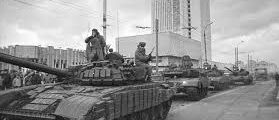
Soviet paratroopers violently seize and occupy the Press House with firearms, armored vehicles and tanks. Four citizens shot, three severely beaten. Women are among the injured. All national newspapers are printed in the Press House. This action by Moscow is the start of creating a news/media blackout.
January 11, 1991, 12:30pm: Soviet Tank Crashes into Truck
The Lithuanian National Defense building in Siauliai is is seized and occupied by Soviet military. A Soviet tank crashes into a truck carrying toys on Zalgiro Street in Vilnius. The truck driver is severely injured.
January 11, 1991, 1:00pm: Driving School Seized
The Kaunas driving school building (where the Lithuanian National Defense Department courses take place) is seized and occupied by Soviet military.
January 11, 1991, 1:30pm: Gorbachev “Out to Lunch”
Landsbergis telephones USSR President Gorbachev but is told the USSR President is “out to lunch”. Landsbergis asked to convey the following message to Gorbachev: “military units under his [Gorbachev] supervision are spilling blood in the Republic of Lithuania, and he must issue an order to halt this action immediately.”
January 11, 1991, 2:30pm: Ignalina Nuclear Power Plant Threatens Parliament
Pro-Moscow employees of the Ignalina Nuclear Power Plant send an ultimatum Landsbergis demanding to reinstate Soviet rule and the Lithuanian Parliament to resign or else beginning January 15 the staff will be forced to cut off electricity to residents in Lithuania.
January 11, 1991, 4:30-6:00pm: Tanks Move Toward Vilnius and Another Building Seized
At 4:30pm, 50 Soviet Paratroop tanks move from Rudamina to Vilnius. In the region of Mariampole near Igliauka, the road to Vilnius is blocked. Military vehicles move from Panemune towards Vilnius. At 6pm, Hunting and Fishing Society building in Vilnius is seized and occupied by the Soviet military.
January 11, 1991, 9:00pm: TV Relay Station Seized
The TV relay station center in Nemencine is seized by Soviet Military.
January 11, 1991, 11:00pm: Soviet Military Seize Railway and Reinforcements Arrive in Vilnius

Soviet soldiers take over the Vilnius railway junction, halting train service. USSR KGB Chief Kriuchkov dispatched 65 men of his Special Forces unit Alfa, under the command of Colonel M.V. Golovatov, to Lithuania. Planes carrying the units arrived at the Vilnius airport. The men proceeded to the military base in Vilnius.
January 12, 1991, 1:00am: Another Violent Building Seizure
Soviet paratroopers break into the Lithuanian National Defense Department building on Kociuskos Street in Vilnius. Two Lithuanian employees were beaten with riot sticks. The offices within were pillaged and destroyed.
January 12, 1991, 2:00am: 32 Lithuanian Police Defect to Soviet Side
Lithuanian police force split by the defection of Major Boleslaw Makutinowicz and part of Lithuanian OMON. Defectors limited to 32 (all local Russians and Poles). Roadblocks were set up on the outskirts of town, although Soviet soldiers did not seem to know for whom or what they were looking.
January 12, 1991, 3:00am: Lithuanian Police Academy Attacked
Lithuanian Police Academy building seized by Soviet special unit forces. About 20 armored vehicles surrounded the building, soldiers disembarked, ran through the yard cutting phone lines and other communications. Only 4 out of 40 Lithuanian officers were able to escape.
January 12, 1991, 6:00am: Landsbergis Tries to Contact Gorbachev
During an all-night plenary of the Lithuanian Supreme Council (Parliament), Landsbergis tries to contact Gorbachev to put an end to the escalating aggression unsuccessfully three times.
January 12, 1991, 2:00pm: Deadly Soviet Military Actions
Soviet military vehicle crushes a car on Tvirtoves Avenue in Kaunas. One person is killed, another critically injured. Thousands of people from Vilnius and all over Lithuania are guarding at Parliament, the television committee, the television tower and the inter-city telephone station.
January 12, 1991, 11:00pm: “National Salvation Committee” Demands to take control
An anonymous anti-constitutional group, declaring itself to be the “National Salvation Committee” (NSC) announces that “its duty is to take over all of the power in Lithuania into its own hands.” and petition the Lithuanian Parliament, demanding its resignation and the introduction of direct presidential (Gorbachev) rule.
January 13, 1991, 1:00am-2:00am: Deadly Soviet Military Crackdown In Vilnius

Soviet forces attacked peaceful demonstrators at Vilnius TV Tower, killing 14 and injuring over 700. Soviet troops seize Tower and Lithuanian radio/tv center, creating media blackout. Instantaneously, the radio/tv center in Kaunas comes on the air and provides underground broadcasts as the last independent station in Lithuania.
January 13, 1991, 1:44am: Soviet Attempt to Mount Coup D-Etat Unsuccessful
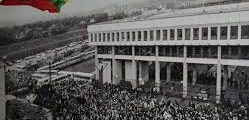
When Soviet tanks arrived at the Lithuanian parliament building to remove the government, they were met by 30,000 protesters who linked arms and sang songs. The Soviet soldiers could not penetrate the crowd and they returned to their base.
January 13, 1991, 2:09am-2:17am: Vilnius TV Broadcast Fades and is Cut
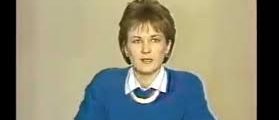
Lithuanian TV news desk of Eglė Bučelytė, who continues to report during the attack, appears, then fades. Transmission switches to crowd in Independence Square at Parliament, saying Hail Mary in unison, then singing “Lithuania Beloved” (Lietuva Brangi), the unofficial Lithuanian national anthem. At 2:17am, the broadcast is cut.
January 13, 1991, 2:10am: Kaunas Radio/TV On The Air
Kaunas Radio begins functioning. Kaunas Television also began programming images received from Western sources in Poland. Citizens were receiving a clear picture of events despite Soviet attempts to dissemintae propganda.
January 13, 1991, 3:00am: “National Salvation Committee” Announce Curfew
Loudspeakers on top of Soviet APCs announce that the National Salvation Committee has taken control and a curfew will be imposed in Lithuania beginning 6:30am on January 13, and that the chief of the Vilnius military garrison Major-General Uskhopchik has been appointed military commandant of Vilnius.
January 13, 1991, 4:30am: Parliament Underground Radio Live
Makeshift radio transmission begins working inside of Parliament. Ham radio enthusiast throughout Lithuania pick up the signal and work together to disseminate the truth to citizens and the West.
January 13 1991: Yeltsin Flies to Estonia to Condemn Crackdown in Vilnius
Russian President Yeltsin flies to Tallinn, Estonia and with Baltic leaders issues appeals to all states – both within the USSR and elsewhere in the world – to strongly condemn acts of military force against the independence of the Baltic States and their peaceful inhabitants.
January 14, 1991: Gorbachev Denies Responsibility
Gorbachev stated “local Soviet military commander, acted with authorization of Baltic Military District Command when he issued the assault order. ‘I learned about it only later when they woke me up.’ Gorbachev “blamed ‘the struggle’ in Lithuania on the Baltic republic’s secessionist parliament and its ‘violations of the constitution.’
January 16, 1991: Funeral for Victims of Soviet Attack

Funeral for the victims killed at the TV Tower: Loreta Asanavicuite (24yrs), Virginijus Druskis (22yrs), Darius Gerbutavicius (18yrs), Rolandas Jankauskas (22yrs), Rimantas Juknevicius (25yrs), Alvydas Kanapinskas (39yrs), Algimantas Petras Kavoliukas (52yrs), Vidas Maciulevicius (25yrs), Titas Masiulis (29yrs), Alvydas Matulka (31yrs), Apolinares Juozas Povilaitis (54yrs), Ignas Simulionis (18yrs), Vytautas Vaitkus (48yrs).
January 16, 1991: Soviet Propaganda Broadcasts From the TV Tower

The ‘National Salvation Committee’ begins to broadcast from the occupied TV tower and station media buildings in Vilnius. The Lithuanian government also begins to broadcast from a makeshift studio in the parliament building, but the broadcast can only be seen in parts of Vilnius. Radio/TV Kaunas continues broadcasts.
January 20, 1991: Deadly Soviet Attack in Latvia
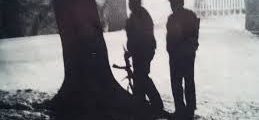
Soviet OMON shot their way into the headquarters of the Latvian Interior Ministry, seizing the building in a gun battle that rages in central Riga, Latvian, for 90 minutes. Four people were killed and at nine wounded. Gorbachev denies responsibility.
January 23, 1991: More Building Seizures
Five military jeeps arrive at ilnius central paper and print dye warehouse (which supplies paper and print dye for newspapers and other publishing houses.). Two people members of the CPSU stated they were taking the warehouse under control. About 20 armed Soviet soldiers seized the building.
January 24, 1991: Soviet Military Violence
Two Parliament Security employees are stopped at a Soviet military checkpoint. Soviet soldiers shoot at car but they escape. Later, two Parliamentarians are stopped at the checkpoint and are shot at. When they tried to flee on foot, one was shot in the leg and the other abducted by soldiers.
January 27, 1991: Customs Posts Attacked by Soviet Soldiers
Lithuanian customs post at Lavoriskes on Belorussian border is attacked by Soviet military. Later, the same soldiers arrive at Medininkai customs post, ordered six Lithuanian customs officers on the ground at gun point, searched post for weapons. When the soldiers did not find any, they thrashed the post and left.
January 29, 1991: Another Murder
At 2:15am, twenty-one-year old Jonas Tautkus (born 1970) was brought in to the hospital with a gun shot wound to the back of the head. He was traveling on the Vilnius-Garunas highway and it is assumed he was stopped by military soldiers and shot. He died the next day.
February 9, 1991: Plebiscite Confirming Support for Independence
In Lithuanian plebiscite over 90% of voters stated “yes,” Lithuania should be an independent democratic state. 84% (2,241,992) people voted (total of registered voters = 2,652,738). Total yes votes (in favor of independence) was 2,028,339 (90%), total no votes (against independence) was 147,040 (6%). International observers from twelve countries verified
February 12, 1991: Iceland Recognizes Lithuanian Independence

With a vote (43 in favor, one against, with two ab- stentions and 17 members absent) in Iceland’s Althing — the world’s oldest parliament — Iceland was the first nation to officially recognized Lithuanian independence. Moscow responded by expelling Iceland’s ambassador to Russia.
March 17, 1991: Gorbachev’s Referendum
New Union Treaty poll occurs in nine Soviet republics. Lithuania, Latvia, Estonia, Armenia, Georgia, Moldova refused participation. Poll question: “Do you consider necessary the preservation of USSR as renewed federation of equal soveriegn republics which the rights of individuals of any nationality will be fully guaranteed?” 76.4% voted yes.
March 18, 1991: Lithuanian Security Chief Abducted
Lithuanian Director of National Security Audrius Butkevicius and his driver were abducted by Soviet military dressed in civilian clothes, carrying automatic weapons. They were interrogated and released 12 hours later.
March 20, 1991: More Soviet Violence
A group of Soviet OMON officers fire at a small bus carrying seven Lithuanian National Defense officers. One is shot in the thigh and hospitalized. Two others, who were beaten, are being held by the Soviet military
March 24, 1991: Nixon in Vilnius

Former US President Richard Nixon visits and meets with Lithuanian leaders in Vilnius and gives a speech at the TV Tower: “Lithuania’s independence is inevitable. It is not a question of whether, but when and how…”
April 9, 1991: More Building Seizures
Soviet military seizes the driving school building in Vilnius. Armed soldiers wearing bullet proof vests arrive, ejected the employees and are holding the building.
April 11, 1991: Gorbachev’s and Landsbergis’ Conversation
Landsbergis calls Gorbachev and asks who in Moscow is in charge of the occupied buildings in Vilnius. Gorbachev replied Doguzhev (USSR First Deputy Prime Minister) had been authorized to handle the situation.
April 19, 1991: Soviet Military Attack Customs Post
Soviet military (15 soldiers, 2 officers) surround Medininkai customs post on Belorussian border. When the soldiers are asked what they are doing, they reply they are carrying out Gorbachev’s Decree. The soldiers unsuccessfully searched the post for weapons, vandalized the post, cut telephone wires, confiscated radio equipment and documents.
April 24, 1991: More Building Seizures
At the 11:00 am, Soviet military forces seize and occupy the Agricultural and Commercial Banks in Naujoji Vilnius. The soldiers claim they are acting under orders of USSR Minister of Internal Affairs, Boris Pugo, as well as an agreement with the Commercial Bank itself to guard the facilities.
April 25, 1991: 9 More Building Seizures
Soviet military seize and occupy nine more buildings: technical schools in Mariampole, Alytus, Siauliai, Panevezys, an aviation factory in Prienai, the Hotel ‘Signalas’ in Alytus, an aero club in Kyviskes and a gliding club in Palukne. The soldiers confiscated technical equipment, building materials, inventory, and cars from the schools.
May 16, 1991: Soviet Military Attack on Customs Post
2:00am: Druskininkai customs post near Byelorssian border attacked by Soviet military. Soldiers fired weapons and threw grenades at the post. 5 Lithuanian unarmed customs officers and 8 border patrol officers escaped major injuries. The soldiers withdrew, leaving the post destroyed and a nearby bus station on fire.
May 23, 1991: 4 More Customs Posts Attacked
4 Lithuanian border customs posts (Germaniskis, Salciai, Vegeriu, Smelynes) along Latvian border attacked by Soviet military special OMON forces. The soldiers did not shoot this time, but ordered post workers to lay on the ground as they searched and vandalized and set fire to the posts.
May 24, 1991: 5 More Customs Posts Attacked
5 Lithuanian customs border posts along Latvian Byelorussian borders attacked by Soviet military in middle of night: Kalviai, Salociai, Lavoriskis, Medininkai, Sumsko. Posts were set on fire, workers beaten. Parliamentarian, Mrs. Rastauskiene, driving near Salociai was shot at and stopped by soldiers and crudely assaulted.
May 28, 1991: 2 More Customs Posts Attacked
At 21:30, Lavoriskis customs post was attacked and burned down. About 15 soldiers, dressed in both civilian and military clothes, stormed the post and violently beat the 4 Lithuanian guards on duty with the butt of their guns. At 21:50, the same soldiers arrived at the Sumskas post, attacked it, beating
May 29, 1991: Denials From Moscow
USSR Minister of the Interior Pugo specifically denied his special OMON forces was attacking Lithuanian customs posts. Television reporters then showed him footage put together by Nevzorov, OMON’s troubadour, and Pugo had to admit those were indeed his forces. He could not, however, explain where their orders were coming from.
June 3, 1991: Soviet Military Surround Parliament Building
At 21:30, approx. 50-100 fully armed Soviet soldiers drove up to three approaches near the Supreme Council building. They made their way through the citizen built barricades, harassed people and then returned to the other side of the barricades. Military checkpoints set up at bridges throughout Vilnius, the airport, central railroad
June 14, 1991: Soviet forces Attack another Customs post
At 2:30am, at Germaniskis, a group of 6-7 OMON soldiers arrive from Latvia, attacked and burned down the post. At 4:00 am, the same troops arrived at the Salociai post. They forced the shift foreman to undress at gun point and beat up several workers.
June 26, 1991: Soviet Soldiers Seize State telegraph and telephone center
At 16:30, Soviet military forces seize state telegraph and telephone center in Vilnius. About 50 armed soldiers broke into the building and ordered employees to stand aside as they stationed themselves throughout the building and disconnected the power and telecommunications equipment. Communications with the other Baltic States, Moscow,the West were
July 28, 1991: 2 More Customs Posts Attacked
Lithuanian customs post at Salociai: At 1 am, 5 armed men dressed in civilian clothes forced post workers to lay on ground, poured gasoline on the customs booth and set it on fire. At 14:10, approx. 17 armed men arrived at post, 4 post workers attempted to run away and were
July 29, 1991: Russian-Lithuanian Treaty
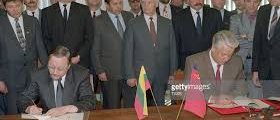
Yeltsin and Landsbergis meet in Moscow to sign a treaty of cooperation. The significance of this treaty was that, both Lithuania and the Russian Federation planned make agreements politics, economy, science and culture directly, and cut out the Moscow “center” all together – undermining Gorbachev’s power.
July 31, 1991: Soviet Executions of Lithuanian Border Guards

Soviet OMON (special police unit) forces shot 8 Lithuanian border guards in the middle of the night. Those killed: Mindaugas Balavakas (b1970) Juozas Janonis (b1962) Algimintas Juozakas (b1969) Algirdas Kazlauskas (b1949) Antanas Musteikis (b1958) Stanislovas Orlavicius (b1956)
August 2, 1991: 7th Medininkai Victim Dies
Seventh Medininkai post victim dies: Ricardas Rabavicius (b1970). Americans help by sending in a U.S. military surgeon from Germany to help save the life of the eight Medninkai victim: Tomas Sernas.
August 18, 1991: Neo-Stalinist Coup Emerges

The “The State Committee for the State of Emergency in the USSR” officially established. Members included “Committee of Eight” (Gosudarstvennyi Komitet po Chrezvechainomu Polozheniyu – GKChP), responsible for signing the decrees removing Gorbachev from power, due to his “state of health,” and assuming control over all State functions.
August 19-21: Coup’d’etat attempt to depose Gorbachev

USSR President Gorbachev is taken hostage by Neo-Stalinist leaders. Tanks emerge on the streets in Moscow but citizens build barricades to block them from reaching the Russian White House to arrest Russian Federation President Boris Yeltsin. The coup fails.
August 19, 1991, 3:00pm: Soviet Military Cuts International Phone
Vilnius International Telephone Exchange Center is occupied by the Soviet military – Lithuania loses ties to the West, although sporadic ties to the USSR remain.
August 19, 1991, 8:25am: Kaunas Radio/TV Seized by Soviet Military
Soviet forces seize the Kaunas radio and television center (the continuing free Lithuanian station that went live after the the TV tower and radio/tv centers in Vilnius were seized in January). Television broadcasts in Lithuania are disrupted, but radio in Vilnius continues.
August 19, 1991, 9:15am: Human Shields Protect Lithuanian Parliament
Landsbergis appeals to Lithuanian citizens to guard the Lithuanian Parliament building from any potential coup. He also requests all members of parliament return to the Supreme Council building. Thousands of people gather at the building.
August 19, 1991, 2:00pm: Soviet Military Declares Curfew
Landsbergis held a press conference and informs that the Soviet Military Commanders of the following cities have declared curfew: Kaunas, Mariampole, Kedainai, Klaipeda; also, in Klaipeda, the port had been closed and blocked with the exception of Soviet military movement.
August 19, 1991, 11:00pm: Soviet Tanks Surround Lithuanian Parliament Building
Over 100 Soviet tanks surround the three approaches to the Lithuanian Parliament building, surrounding it. They await Lithuanians to fire upon them, but Lithuanians show restraint. Citizens stand between them and the building. After a half hour, the tanks withdraw.
August 22, 1991, 3:00am Moscow: The Coup is over – Gorbachev returns to Moscow

USSR President Gorbachev returns from Crimea to Moscow. The Coup leaders are arrested and the Coup is over.
August 21, 1991, 5:00pm: Soviet Withdrawal from building occupied during coup
The Soviet military begins to withdraw from the buildings it has seized and occupied since the start of the coup on august 19, 1991.
August 21, 1991, 9:00am: Soviet Military Seizures of all media transmissions
By 9am, the Soviet military had seized radio relay stations in Anyksciai, Siauliai, Alytus and others as well as the telephone-telegraph exchange in Panevezys. The only “free” broadcasts in Lithuania were emanating from the Parliament studio.
August 22, 1991, 9:30am: Landsbergis Demands Soviet Military Withdraw from TV Tower
Landsbergis calls the head of General Staff of armed forces of USSR, Mikhail Moisejev and says if Soviet officials do not give the order to Soviet troops to withdraw from the tv tower and radio/tv center by 1pm, residents and officials of Lithuania will take the buildings back themselves.
August 22, 1991, 12:30pm: Gorbachev Capitulates
Landsbergis announces Moscow withdraw its forces from the 29 buildings that had been seized since January 13, 1991. Soviet forces withdraw from the Radio/TV Center an hour later.
August 21, 1991, 10:45pm: KGB forces kill Lithuanian guard in Parliament Attack

Rogue group of KGB soldiers break through Lithuanian Parliament checkpoint in a jeep. Lithuanian guards fire a warning flare. Citizens serving as human shields quickly run toward the flare. The jeep turns around toward the checkpoint and an exchange of fire takes place, killing Lithuanian guard Artūras Sakalauskas.
August 22, 1991, 6:07pm: Soviet Military Withdrawal from TV Tower

After Landsbergis gives Gorbachev an ultimatum to withdraw from the TV Tower, Gorbachev capitulated. The Soviet military withdrew from the TV/Radio Center and the TV Tower.
August 23, 1991: Lenin is Torn Down

The crowd was unable to pull Lenin down from the massive granite pedestal, so they cut him at the knees…
August 24, 1991: Official State Recognitions of Lithuanian Independence

Iceland was the first to recognize Lithuanian independence in February. Denmark was the second which opened the floodgates of official recognitions from around the world.
August 29, 1991: First Official State Visit – French Foreign Minister

French Foreign Minister Roland Dumas arrives in Vilnius to restore France’s relations with Lithuania. Dumas is the first diplomat of his rank to visit the Baltics since they declared independence after 50 years of Soviet rule. Dumas promises that France will return Lithuania’s pre-WWII gold reserves.
September 6, 1991: USSR State Council recognizes Lithuanian independence
The newly formed USSR State Council officially recognizes Lithuanian independence, however, the Soviet Union again refused to acknowledge that it had annexed them by threats and brute force in 1940, referring only to the “concrete historical and political condition” on the eve of World War II.
September 17, 1991: Lithuania becomes a member of the United Nations

Lithuania becomes a member of the United Nations.
October 25, 1992: Lithuanian Constitution Adopted

The new constitution was approved by the Supreme Council in October 1992 and submitted to popular vote.The constitution was approved in a referendum. 75% of those voting (57% of all eligible voters) voted in favor of adopting the document, with a turnout of 75.3%.
1993-1998: Algirdas Brazauskas, First Post-Soviet President of Lithuania

After independent Lithuania established a democratic constitutional government and the office of a president, citizens elected former Communist reformer leader Algridas Brazauskas. He served one term.
June 25, 1993: National Currency Reintroduced

Lithuania reintroduces its national currency, the Litas.
August 30, 1993: Last Soviet Troops Withdraw From Lithuania

After two years of negotiations, the final Soviet troops finally withdraw from the territory of Lithuania.
1998-2009: Valdas Adamkus Elected President of Lithuania

Valdas Adamkus was born in Lithuania but escaped during the WWII Soviet occupation, becoming a displaced person, emigrated to the United States where he served in the US Army and worked at the Environment Protection Agency. He served two terms.
March 29, 2004: Lithuania, Latvia and Estonia Become Members of NATO

May 1, 2004: Lithuania Becomes Member of the European Union

2009-2018: Dalia Grybauskaitė Elected President of Lithuania

Dalia Grybauskaitė was elected to two terms, running as an independent. An economist and former Lithuanian Minister of Finance and European Commissioner for Finance Programming and the Budget. She’s one of the few European leaders who takes a hard line against Moscow, having stated: Russia as “a terrorist state which carries
January 1, 2015: Lithuania Adopts the Euro

The euro was expected to replace Lithuania’s national currency, the litas by January 1, 2007, but persistent high inflation and the economic crisis delayed the switch. On 1 January 2015 the litas was switched to the euro at the rate of 3.4528 to 1.
September 3, 2015: NATO Opens Permanent Military Post in Lithuania

The North Atlantic Treaty Organization established its first permanent outposts next to Russia in a step to shore up defenses along the alliance’s eastern flank because of the increasing threats from Russia.
June 30-July 6, 2018: See you at Lithuania’s Centenary Song Celebration

http://www.dainusvente.lt/en/

